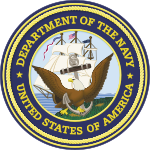Authoring Instructional Materials (AIM) is a management system consisting of a set of commercial and government software used by the United States Navy for the development and design of training curricula and instructional content.[1]

First proposed in the 1970s,[2] AIM was designed to maximize the efficiency of the curriculum development process through the use of computer-based automation tools.[3] Currently, over 300,000 hours of the Navy's instructional materials exist using the AIM system.[2]
AIM comprises the toolsets AIM I and AIM II, which were developed for the Personal Performance Profile approach and the Task Based approach respectively.[4] AIM II stores training content on a SQL server, serving as a relational database for managing the relationships between instructional material elements.[4] PDF, XML and HTML are available as content outputs.[4]
Newer versions of AIM include the Content Planning Module (CPM) and Learning Object (LO) Module. The modules incorporate data from the Job Duty Task Analysis (JDTA) process, which aids the revision and creation of training programs.[5] The latest version of the system is AIM 5.0.[6]
History
editThe idea of AIM was first proposed in the 1970s, and development of the system began in the 1980s.[2] In the 1980s, AIM was introduced as an Operational Requirement by the Chief of Naval Education and Training (CNET) and initial R&D was performed by the Navy Personnel Research, Studies, and Technology (NPRST) division.[7]
The toolsets AIM I and AIM II were first released between 1987 and 1997. An updated version of AIM, integrating the new CPM and LO modules, was developed between 2006 and 2012.[7] According to the Naval Air Warfare Center Training Systems Division (NAWCTSD), AIM as a system for streamlining curriculum development was able to reduce the "number of hours spent for development of new training materials by as much as 25% and for maintenance of existing materials by as much as 50%."[8]
The system is currently managed by NAWCTSD,[9] while development and primary support for AIM is provided by the computer software firm Carley Corporation[9]
References
edit- ^ Wulfeck, Wallace H.; Dickieson, Janet L.; Apple, James; Vogt, Jerry L. (1993). "The automation of curriculum development using the Authoring Instructional Materials (AIM) system". Instructional Science. 21 (4): 255–267. doi:10.1007/BF00128495. ISSN 0020-4277. S2CID 58775823.
- ^ a b c Kenneth H. Silber; Wellesley R. Foshay (19 November 2009). Handbook of Improving Performance in the Workplace, Instructional Design and Training Delivery. John Wiley & Sons. p. 216. ISBN 978-0-470-52506-7.
- ^ J. L. Vogt; E.R. Robinson; B. Taylor; W.H. Wulfeck (1989). "Authoring Instructional Materials (AIM): Automated Curriculum Development (NPRDC TR 89–12)" (PDF). Navy Personnel Research and Development Center. Archived (PDF) from the original on March 3, 2016.
{{cite journal}}: Cite journal requires|journal=(help) - ^ a b c Reginald L. Johnson (2005). "Authoring Instructional Materials". In B. Hoffman (ed.). Encyclopedia of Educational Technology. San Diego State University.
- ^ "CPM-LO Module (NAVEDTRA 136/137/138)". AIM (Authoring Instructional Materials). Archived from the original on 27 March 2013. Retrieved 30 April 2013.
- ^ "AIM Version 5.0". AIM (Authoring Instructional Materials). Archived from the original on 15 November 2015. Retrieved 30 April 2013.
- ^ a b "AIM Overview". Authoring Instructional Materials (AIM). Naval Air Warfare Center Training Systems Division. 15 March 2012. AIM Historical Perspective. p. 4. Archived from the original on 24 March 2013. Retrieved 30 April 2013.
- ^ "Authoring Instructional Materials (AIM)". Naval Air Warfare Center Training Systems Division. Retrieved 30 April 2013.
- ^ a b "AIM Overview". Authoring Instructional Materials (AIM). Naval Air Warfare Center Training Systems Division. 15 March 2012. AIM Management Organization. p. 7. Archived from the original on 24 March 2013. Retrieved 30 April 2013.